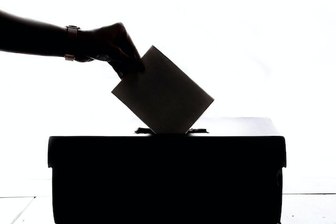If you want to see why the Conservatives will find it so hard to achieve outright victory next week, consider the fates of two MPs at the last election. Five years ago, Diana Johnson won Hull North for Labour, with 52% of the vote. One hundred miles to the west, across the Pennines, Nigel Evans won Ribble Valley for the Conservatives, also with 52% of the vote. But whereas just 15,364 people turned out for Johnson, Evans needed 25,834 votes to match her percentage.
How come? There are two reasons. Ribble Valley had 13,000 more electors than Hull North; and its turnout was higher: 66% against only 47% in Hull. That pattern was repeated in much of England – higher turnouts and a growing population in Tory seats, as against a contracting population and low turnout in many Labour seats. This meant that the Conservatives needed to garner substantially more votes than Labour to elect each MP. Overall, the Tories won 64,000 more votes than Labour in England in 2005, but 92 fewer seats.
This time the discrepancies won’t be quite so big, for boundary changes have reduced the differences in electorates. But the new boundaries don’t eliminate these variations; and turnout is likely to remain lower in the industrial and urban seats that Labour dominates. Which is why the Conservatives win fewer seats than Labour for any given percentage share of the Britain-wide vote. The Tories need to be close to 40% to be sure of an overall majority, while Labour could win outright with as little as 34%.
How times have changed. When Winston Churchill led the Tories back to power in 1951, the opposite happened: across Britain, the Conservatives won fewer votes than Labour, but more seats. The past was another country in other ways, too. Turnout exceeded 82%. Labour seats often produced higher turnouts than Conservative seats: in mining areas, turnouts of more than 85% were common. And of those who did vote, fully 97% backed Labour (49%) or the Conservatives (48%).
The Liberals, with less than 3% of the vote, held just six seats – and two of these depended on the Conservatives not standing locally. Indeed, at one point Churchill travelled north to speak publicly in favour of Violet Bonham Carter, the Liberal candidate in Colne Valley.
In today’s multi-party times, the Liberal Democrats don’t need David Cameron’s endorsement. Indeed it would terrify them. But the task of translating votes into seats still causes them headaches. Assuming uniform swing, their 28% in today’s poll yields them just 90 seats, while Labour, with 27%, would win as many as 243.
The Lib Dems’ problem is that their vote is much more evenly spread than that of the other two parties. At 30-35% they stack up a very large number of second places, but far fewer local victories. But when they win above 38%, these second places start turning into first places in large numbers. If some electoral avalanche swept Labour and the Tories away and left the Lib Dems with 44% of the vote (which is what Tony Blair achieved in 1997), they would win 463 seats. This is more than either Labour or the Tories could expect at that level.
Sadly for the Lib Dems, that remains the stuff of dreams. Their support peaked at 34% last Tuesday, five days after the first TV debate and before much of the press started gunning for Nick Clegg. By Thursday their share was down to 28%. It has stabilised since the second TV debate, in which viewers credited Clegg with performing well, even if he did not match his runaway victory of the first debate.
My current prediction is that the Lib Dems will not enjoy another surge, though they will retain most of the gains they have made in the past ten days. I expect the Conservatives to end up with 36%, Labour with 29% and the Lib Dems with 26%.
This would almost certainly leave Britain with a hung parliament. Even though these figures would mean almost two million more Tory than Labour voters, the Tories would be well short of the 326 seats they need for an overall majority. In fact, the recent Lib Dem surge is doubly bad news for the Tories. First, they were banking on winning 10-20 seats from the Lib Dems to help them win power. That prospect now looks unlikely; indeed, the Lib Dems might start taking more seats from the Tories.
The second factor could prove more important. The Lib Dem surge is hurting Tory prospects in Labour-Conservative marginals. Individual nationwide polls cannot detect this; but because YouGov is questioning different samples of around 1500 people daily, we can combine a week’s polls into a total sample of more than 10,000 and see what is happening in different kinds of seat.
YouGov has compared the results from BC (before Clegg) and AD (after debate) in the 115 Labour-Conservative marginals that would fall to the Tories on a swing of 8%. In 2005 Labour’s overall lead in these seats was 9%. In the BC days before the Lib Dem surge, the Tory lead in these seats was 4%. That represented a swing of 6.5% in these target seats, compared with a swing of 5% nationally. In other words, the Tories were doing better where they needed to win than in the rest of Britain, and stood to capture 94 Labour seats. Add in, say, ten gains from the Lib Des and the Tories would be just 12 short of an overall majority.
The AD pattern is different. Our sample of 2,220 in these target seats now puts Labour one point ahead. The swing since 2005 is down to 4% in the Labour marginals – the same as the national swing. Not only is the prospect of big Conservative gains from the Lib Dems slipping away; the bonus swing the Tories had been enjoying in the Labour marginals has also disappeared. The Lib Dem surge has hurt the Tories with special force in Labour-Conservative marginals, where the ten-point gain in Lib Dem support has been overwhelmingly at the Tories’ expense. On these figures the Tories would gain only 57 Labour seats. And if they prove unable to supplement these with gains from the Lib Dems, The Tories would not even be the largest party.
However, if the Lib Dems do slip back to 26%, the Tories are likely to reclaim some of this lost ground in their target seats. So my current prediction is that the Tories will win 290 seats, Labour 250, the Lib Dems 90 and other parties 30. But, as they didn’t quite say on Stingray, anything can happen in the next ten days.
This commentary first appeared in the Sunday Times, April 25.









